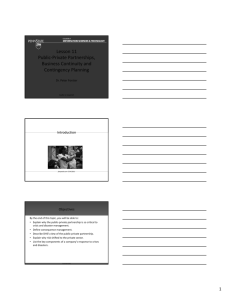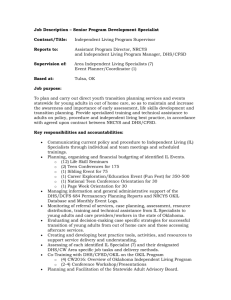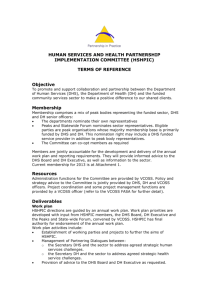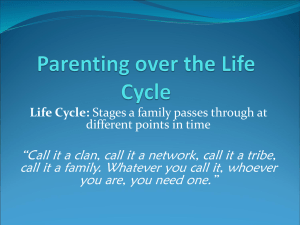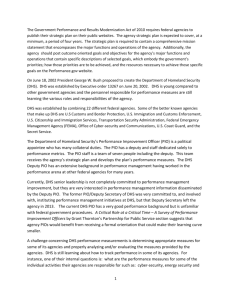WAMFT Systemic Treatment Planning 101
advertisement
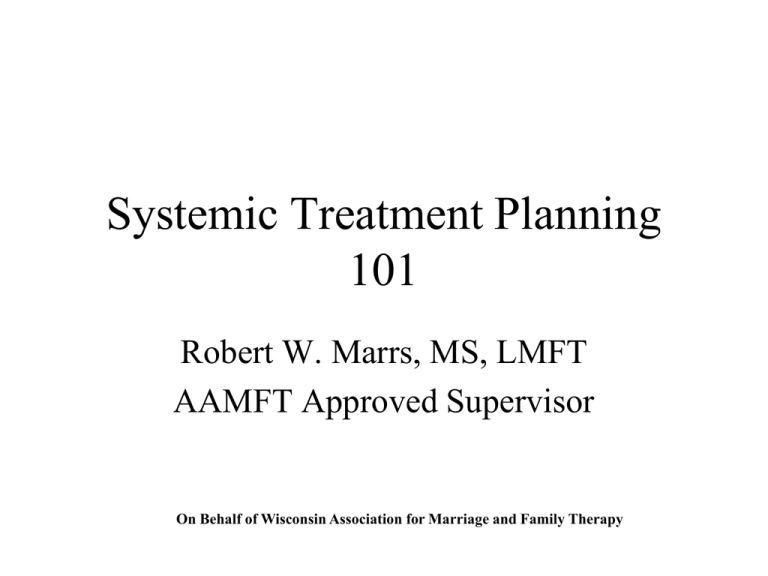
Systemic Treatment Planning 101 Robert W. Marrs, MS, LMFT AAMFT Approved Supervisor On Behalf of Wisconsin Association for Marriage and Family Therapy What Is a Treatment Plan? • A treatment plan is… – A contract between you and the family about what will happen during the course of treatment – A statement about the nature of the therapeutic relationship – The clinical justification for everything you choose to do over the course of treatment What Is a Treatment Plan? • A treatment plan is based on… – The multidimensional clinical assessment (DHS 35.19, COA-MH 3) • • • • Diagnoses & symptoms Presenting problem/concerns Client/family functioning, etc Child developmental factors What Is a Treatment Plan? • The treatment plan consists of… – Agreed upon goals, desired outcomes, and time-frames for achieving them (COA-MH 3.02, DHS 35.19, 107.13). – The method(s) to reduce or eliminate the symptoms causing the client/family’s problems or inability to function (DHS 35.19, 107.13). – Developmental factors (DHS 35.19, 107.13) What Is a Treatment Plan? – The client/family’s strengths (DHS 35.19, 107.13) – Additional supports or services to be provided, and by whom (COA MH 3.02, DHS 107.13) – Possibilities for maintaining and strengthening family relationships (COA-MH 3.03) – The client/family’s and provider’s signatures (DHS 35.19, 107.13, COA-MH 3.02) Writing Treatment Goals • Treatment goals reflect both the final destination (long term goals), the route for getting there (short term goals), and the need for traveling (definition of problem) • Treatment goals (driving directions) should be: – – – – Concrete and specific, Systemic, Behavioral, and Within the client/family’s control Writing Treatment Goals E.g. “Client will demonstrate better anger management skills as evidenced by decreased outbursts at home and work, elimination of violence and other forms of physical aggression, decreased incidents of disciplinary action by employer.” Writing Treatment Goals E.g. “Client couple will demonstrate increased intimacy as evidenced by higher scores on MSI-R, decreased conflict and contempt, increased sexual activity, and better understanding of wants and needs.” When writing a treatment goal, use the phrase “as evidenced by” to help you use behavioral language. For more assistance learning how to write systemic treatment goals, please consult the following resource: Dattilio, F. & Jongsma, A. (2000). The family therapy treatment planner. New York: Wiley. Treatment Plans as Anchors • The treatment plan serves as the clinical justification for the following: – – – – – – Treatment System (those who will be receiving care) Treatment Approaches Treatment Modalities Treatment Interventions Treatment Recommendations Treatment Referrals Treatment Plans as Anchors • Therefore, what happens over the course of treatment should always be linked to the agreed upon treatment plan. – In other words, your progress notes should be somehow connected to the goals of the treatment plan. Treatment Plans as Anchors • Whatever you decide to do in therapy should start with the question “how does this serve the agreed upon treatment plan?” Modifying the Treatment Plan • Treatment plans must be modified when any of the following change: – – – – – – – Definition of the problem / diagnosis Client/family’s concerns Client/family’s desired outcome Goals are achieved Treatment approaches Treatment modalities (individual, couple, group) Level of functioning / stability / risk Reviewing the Treatment Plan • Treatment Plans are to be reviewed every 90 days or every 6th session (whichever is longer) by the client and provider in order to assess client progress during treatment • Completion of treatment goals should indicate the need for a new treatment plan, or readiness for termination Individual vs. Couple & Family • Once again, whatever you decide to do in therapy should start with the question “how does this serve the agreed upon treatment plan?” If you expand into couple or family therapy, refer pieces of the system to other providers, offer individual therapy, etc., it should all be in service to agreed upon treatment goals and the desired outcome Individual vs. Couple & Family • Any changes in the methods/modalities of treatment need to be reflected in a modified treatment plan and approved by the client. • Remember, all recipients of mental health treatment must sign an informed consent. If you are expanding into couple/family therapy than you need to be sure those members also sign the informed consent. Termination • Termination should occur when the goals of treatment have been achieved, and the client/family is able to function successfully in day-to-day life • Termination should include a review of the services that were provided, the progress that was made, and a recovery maintenance plan.


